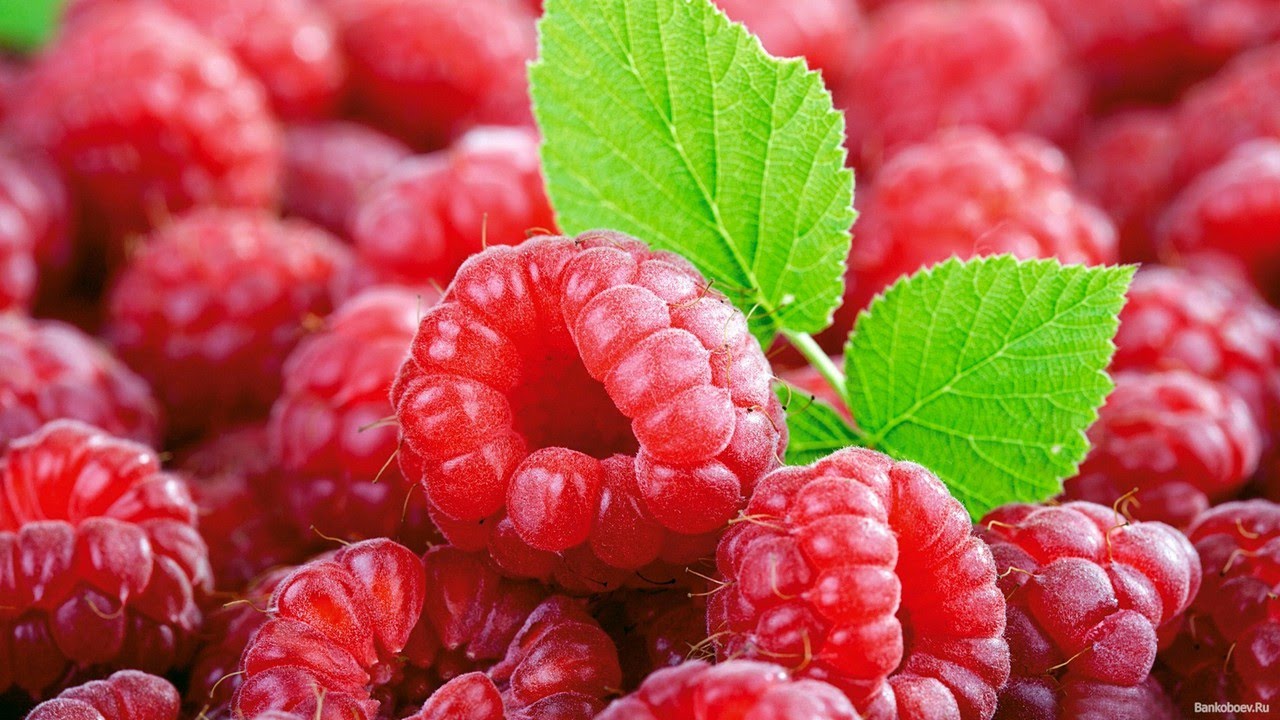Content:
Many gardeners are wary of remontant raspberries, suggesting that these varieties take a lot of time and effort to get good yields. In fact, everything is different. Repairing varieties in care are no different from traditional types, but their abundance of harvest sometimes exceeds the usual crops at times. Diamond remontant raspberry is no exception. This species was bred by the Russian breeder Kazakov I.V. recently. In 2006 he was officially registered and recommended for cultivation.
Features of Raspberry Diamond
Raspberry Brilliant is a bush that reaches a height of about 1.2-1.5 meters. New shoots are slightly reddish with small, thornless thorns. Biennial shoots are more brownish in color. The shape of the leaf is slightly crooked, a bright green shade with jagged edges.
The peculiarity of this variety is fruiting, both annual and biennial shoots bear fruit. Harvesting begins early July and lasts until the end of October or until the first frost.
When studying the description of the Brillianttova raspberry variety, it can be seen that the berries are of an average size (half a matchbox), the weight is about 4 grams, the shade is bright glossy purple-pink, the taste is sweet and sour at the same time. There is an opinion that the brilliance of raspberries is similar to a diamond, hence its name - Diamond.
Due to the rather small thorns, harvesting does not cause difficulties, the berries are easily torn off the stalk, do not crumble from the bush for more than a week after ripening, they perfectly retain their original shape. It is believed that raspberries have the sweetest taste in August, and more and more sourness appears in the berry closer to cold weather. This is directly related to the abundance of sunny days.
The main positive characteristic of the variety is its good yield. From one bush, you can collect up to 3 kg of berries at a time. It is recommended to harvest raspberries in the morning or evening hours, excluding rainy weather, this will ensure longer storage and transportation.
On a note. The variety has good resistance to frost, drought and pests.
Homemade jams and compotes from Brillianttova raspberries have a pleasant and incomparable taste, aroma and a lot of useful vitamins. Moreover, this variety perfectly freezes at home, and raspberries can be enjoyed throughout the year.
A number of such features can be distinguished: raspberries bear fruit poorly in the shade and, due to their abundant yield, require a mandatory garter, otherwise it threatens with broken branches.
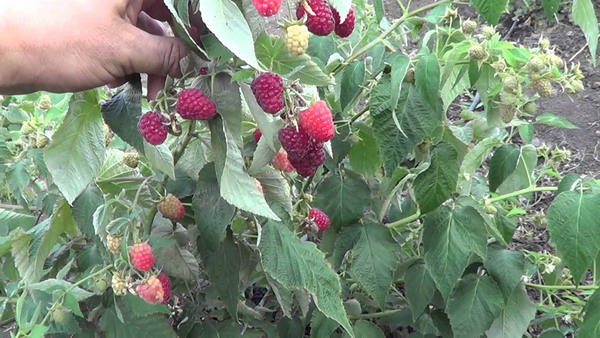
Raspberry Diamonds
Selection of seedlings
Experienced gardeners recommend purchasing seedlings from nurseries. There you can buy the entire set of Brillianty raspberries, as well as get expert advice on planting and growing. But when selecting seedlings, you should pay attention to a number of points:
- a developed root system at least 15 cm long, without dry and damaged parts;
- the presence of at least 2 shoots with a diameter of one cm or more;
- no signs of illness.
Important! It is not advisable that the roots be wrapped in plastic wrap for a long time, this threatens them with drying, it is recommended to place them in a bucket of water after purchase and plant them in the ground as soon as possible.
Selecting and preparing a landing site
A well-lit place for a raspberry tree is chosen.It has been proven that in shady areas, fruiting is significantly reduced. Therefore, it is better to give preference to the southern part of the site. The presence of a high fence or wall from the house will perfectly protect from the winds.
Important! The shadow of the structure must not fall on the plant.
Planting Raspberry Diamond is possible both in autumn and spring. In the case of an autumn planting, the site is prepared from the second half of August, with a spring planting - in late October-early November, before frost.
Site preparation is standard: it is cleared of weeds and fallen leaves. Rotten manure, wood ash, dry lime can be scattered on the surface of the soil, and everything can be dug up so that the fertilizer is under a layer of earth.
Attention! When choosing a site, according to agronomists, it is important what grew there earlier. After sweet peppers and tomatoes, the survival rate of raspberries is worse than after legumes.
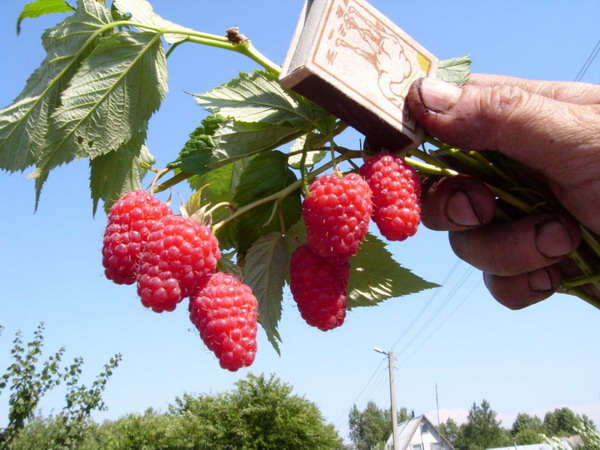
Raspberry Brilliant has large fruits
Landing
Raspberry variety Brilliantovaya grows in rather spreading bushes, so it is not recommended to plant it in the traditional way in the form of a wide and continuous line. It is better to place the bushes at a distance of about 70 cm from each other, and there should be at least 2 meters between the rows.
At the bottom of the pit, 300 grams are placed. fermented manure (cover the top with a 10 cm layer of earth) or use superphosphates (30 g) and potassium salt (20 g), they are mixed with the planting soil.
The roots can be open (there is no soil at all on the root system) or closed (the roots are covered with a layer of earth). If the roots are open, they are pre-dipped in a clay consistency (mix 1-2 kg of a barn with 1 kg of clay and dilute in 3 liters of water).
Having dug a separate hole, about half a meter deep and wide, place fertilizers (manure), which are covered with a layer of earth. The seedling is located in the center of the pit, the roots are straightened and covered with fertile soil, which is trampled on top. Having made a hole around the bush, pour 10 liters of water.
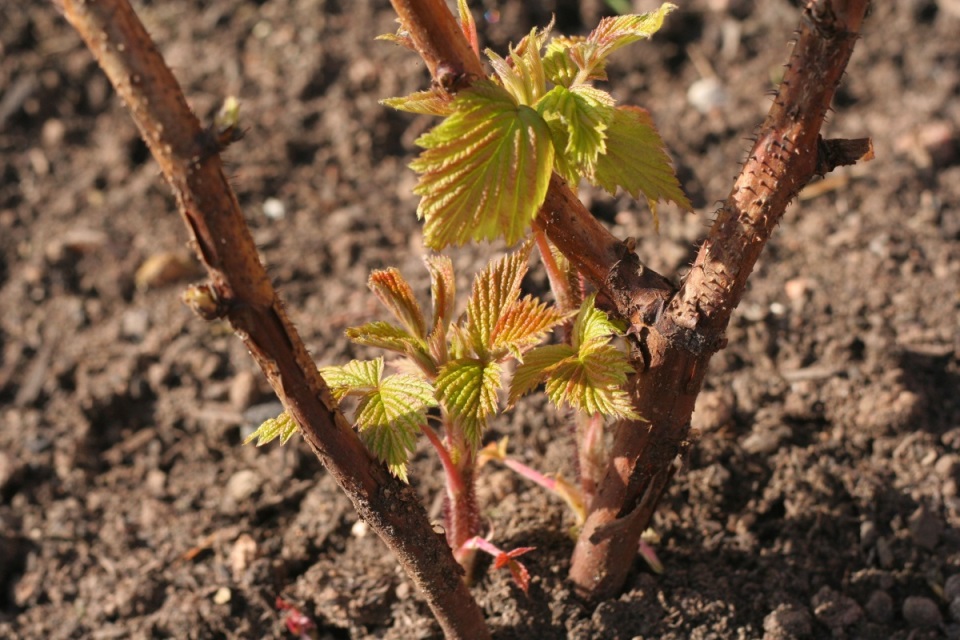
Young shoots in the spring of Raspberry Diamond
Care
Caring for Diamond Raspberries directly affects its yield, it means:
- This raspberry variety tolerates drought well, but don't forget about watering. As the soil dries up, it is recommended to water the bush with 5 liters of water (1-2 times a week on average). In late autumn, before the onset of the first frosts, the bushes are watered abundantly with water at the rate of at least 10 liters. In the summer period of time, watering should be carried out either early in the morning or in the late evening, avoiding hot sunlight;
- Raspberry pruning is directly related to the desired yield. This varietal type of raspberry is distinguished by the fact that fruiting is possible on both annual and biennial shoots. Therefore, when using annual shoots, they are completely removed at the end of autumn before frosts, no trimmings remain. In spring, almost all new shoots are removed, only the best ones in the amount of 5-6 pieces remain. Another option is not to cut off annual shoots, in early spring only to remove damaged or diseased branches;
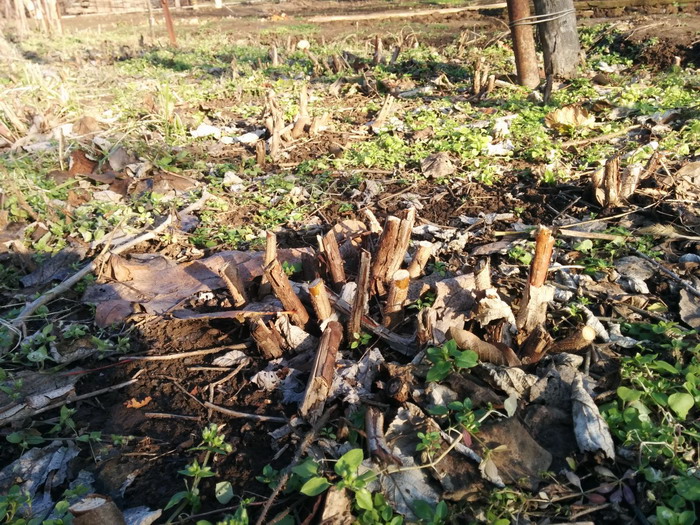
Autumn pruning of Diamond raspberries
- One should not forget about periodic feeding of raspberries - this is a prerequisite for a good harvest. You can use folk methods (manure, ash), you can purchase factory production, especially since their prices are more than affordable. For example, “Universal Ryazanochka” is a fertilizer based on macro- and microelements, developed specifically for remontant varieties of raspberries. The price is about 120 rubles. RF for 60 gr., Consumption - 4 gr. (1 tsp) for 10 liters of water, it is recommended to add during watering. It is used to prevent fungal diseases, as well as to increase yields. Mineral fertilizer "Mivena" has proven itself well, at the rate of 500 gr. - 400 rubles. RF. It is scattered only 1 time in spring on wet soil at the beginning of flowering, covered with a thin layer of moist earth. The frequency of repetitions for the 2nd, 3rd and 4th years at the rate of 75 g., 100 g., 125 g. At the same time, fruiting increases significantly;
- The approaching winter months require special preparation, since the Diamond Raspberry is resistant to frost down to -25 degrees. In the case of complete cutting of annual shoots, it will be quite enough to mulch them. To do this, you can use fallen, slightly rotted foliage (peat), wood chips. Places of cuts are abundantly mulched with a layer of about 20-30 cm. In early spring, the entire layer of mulch must be removed. If the shoots are not cut off, the wire is pulled at a height of 20-30 cm from the ground level, all raspberry branches are neatly bent and fixed to the wire. You should not worry - the shoots are very elastic and flexible. The use of any covering material is encouraged;
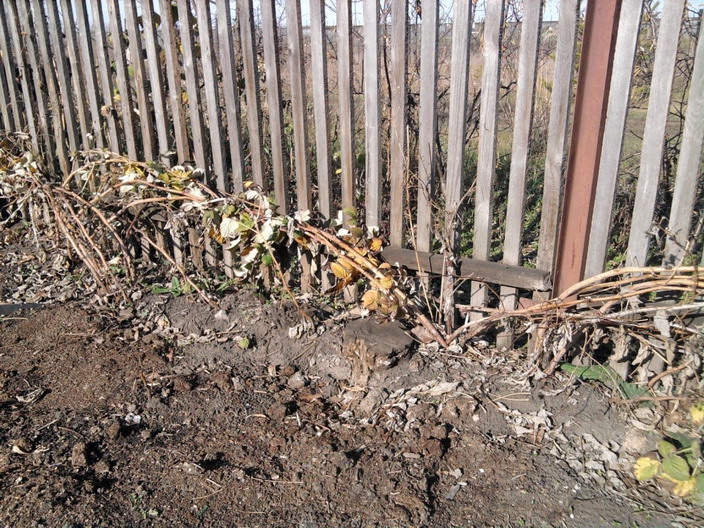
Ducking Raspberry Diamonds, preparing for winter
- The diamond raspberry needs the obligatory garter of the branches. To do this, the ropes are pulled in 3 rows at a height of 70, 100 and 120 cm. Each branch is tied separately. Or you can use ready-made trellises, the garter is performed using the standard method;
- This variety of raspberries is very resistant to pests, but, nevertheless, it is recommended to spray in early spring, before the first buds appear. You can use Topaz solution (10 grams per 5 liters of water), Bordeaux liquid (30-50 grams per 10 liters of water) or nitrophenes (30 grams per 10 liters of water). It is not recommended to spray during flowering and fruiting. Usually 1-2 times a season is enough.
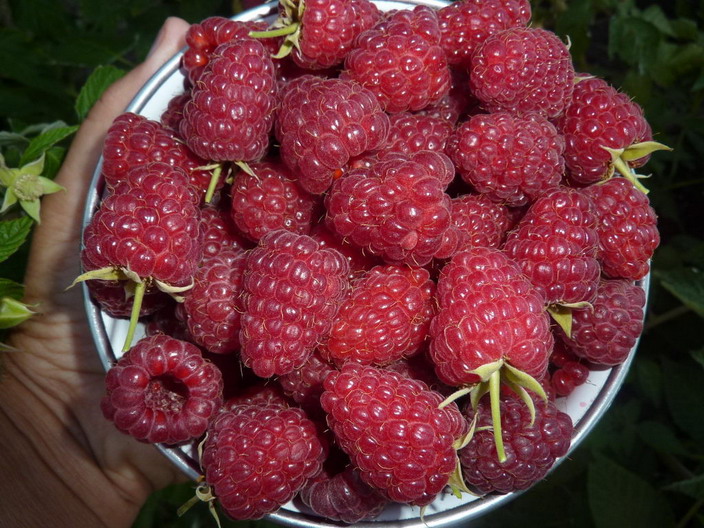
Brilliant raspberries make wonderful jams
Growing Raspberry Diamond does not require much time and effort. Correct planting, watering, fertilization are integral factors in the growth of this varietal crop. The reward will be a good harvest, delicious preserves and jams, jelly and jelly.
